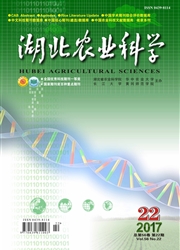

 中文摘要:
中文摘要:
基于Landsat8卫星2013年9月获取的合肥市OLI多光谱数据,在经过校正以及波段的融合等处理后得到的数据作为研究数据,采用不同分类方法进行分类识别,并且对比不同分类器在遥感影像分类中的效果和分类精度。根据国家土地利用现状分类的标准和合肥市土地利用的现状,将合肥市的土地主要分为建设用地、交通用地、水体、绿化用地、农业用地、林地等6类,并采用5种常见监督分类方法和BP神经网络分类法对于本研究数据进行分类,结合实际用地情况对分类结果进行了总结分析,完成总体分类精度和Kappa系数等指标对各分类器精度的评价,对比了各分类器对各要素的分类精度。
 英文摘要:
英文摘要:
Based on OLI multi-spectral data acquired from Landsat8 of Hefei City in September 2013, after correction and band fusion, the processed data as the research data. The effects and classification accuracy among different classifiers were compared by using different classification recognition in remote sensing images. According to the national standards of land using classification and the land use present situation about Hefei, the land in Hefei is divided into construction land, trans- portation land, water, green land, agricultural land and forest land, then use 5 kinds of common supervised classification methods and BP neural network method for this paper's research data, analyzed the classification results combined with the actual status in land use. The evaluation about each classifier accuracy was completed by some indieators such as overall ae- curacy and Kappa coefficient, and the classification accuracy of each elements with each classifier was comoared.
 同期刊论文项目
同期刊论文项目
 同项目期刊论文
同项目期刊论文
 期刊信息
期刊信息
